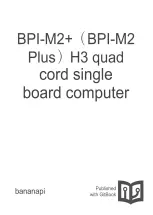
PROCESSOR TECHNOLOGY CORPORATION
Sol THEORY OF OPERATION SECTION VIII
supplied by the Encoding ROM, with the data being determined by in-
puts from the Column Scanner and Function Latch Decoder. This
strobe (Data Out) also enables the Strobe Generator to output !STROBE
a 6 usec pulse that signals the Sol CPU that the Keyboard is ready to
send data.
Eight bits of keyboard data (KBD0 through KBD7) are stored in
the Output Latch. KBD0 through KBD6 represent the ASCII code for the
character associated with the key closure, or closures, that initi-
ated the Data Out strobe from the Sequence Detector. KBD7 is used
only for special control characters (e.g. MODE SELECT, CLEAR and cur-
sor movement) that are recognized by the Sol program. The data on
KBD0-7 is input to the Sol CPU when it issues !PORT_IN_FC (refer to
Paragraph 8.5.2 on Page VIII-14).
The Repeat Counter is enabled when the REPEAT key and a char-
acter key in the Key Switch Capacitive Matrix are pressed at the same
time. When this occurs, Key Out (initiated by the character key clo-
sure) is active, and the Repeat Counter generates a periodic Repeat
Strobe. This strobe disables the Sequence Detector and causes the
Strobe Generator to output repetitive !STROBE pulses. Column 30 also
prevents the Sequence Detector from strobing additional data into the
Output Latch.
The Function Latch and Decoder latches and decodes the Low
Order Count from the Row Scanner when the "function key" column in
the Switch Matrix is selected by the Column Scanner. It then outputs,
as appropriate, !LOCAL, !RST and !BRK to J1 and SHIFT/SHIFT_LOCK, UPPER_
CASE and CONTROL bits to the Encoding ROM. The latter three supply
three of the seven address bits to the ROM which specify the high
order four KBD bits (KBD4-7).
All keyboard outputs are supplied to J1 which is connected
to J3 on the Sol-PC.
8.6.2 Circuit Description
Refer to the Keyboard schematic in Section X, Page X-23.
Keyboard operation is controlled by a 3 usec clock circuit
consisting of NAND gate U7, R7 and C7. U7 is connected as a Schmitt
trigger inverter with negative feedback through R7 and C7. The out-
put on pin 11 of U7, a square wave with a 3 usec period, is inverted
in U4 (a NAND gate connected as a simple inverter) and applied to the
clock input (pin 11) of U8. U8 operates in a toggle mode by virtue
of feeding its !Q output on pin 8 to the D input on pin 12. Thus, its
output state changes on each clock to produce a 6 usec and an in-
verted 6 usec clock on pins 9 and 8 respectively.
Each of these outputs is connected to a section of U7 where
each is AND'ed with the 3 usec clock. This generates two negative
going clocks at pins 8 and 6 of U7. These outputs are called !
φ
1 and
VIII-39
Summary of Contents for Sol-PC
Page 35: ......
Page 89: ......
Page 90: ......
Page 91: ......
Page 92: ......
Page 93: ......
Page 94: ......
Page 95: ......
Page 96: ......
Page 97: ......
Page 98: ......
Page 99: ......
Page 100: ......
Page 101: ......
Page 102: ......
Page 103: ......
Page 104: ......
Page 105: ......
Page 106: ......
Page 107: ......
Page 108: ......
Page 151: ...VIII 11...
Page 167: ...VIII 27...
Page 186: ......
Page 187: ...SECTION IX SOFTWARE Sol TERMINAL COMPUTERTM Processor Technology...
Page 191: ......
Page 197: ......
Page 223: ......
Page 224: ......
Page 225: ......
Page 226: ......
Page 227: ......
Page 228: ......
Page 229: ......
Page 230: ......
Page 231: ......
Page 232: ......
Page 233: ......
Page 234: ......
Page 235: ......
Page 236: ......
Page 237: ......
Page 238: ......
Page 239: ......
Page 240: ......
Page 241: ......
Page 242: ......
Page 243: ......
Page 244: ......
Page 245: ......
Page 246: ......
Page 247: ......
Page 248: ......
Page 249: ......
Page 250: ......
Page 251: ......
Page 252: ......
Page 253: ......
Page 254: ......
Page 255: ......
Page 256: ......
Page 257: ......
Page 258: ......
Page 259: ......
Page 260: ......
Page 261: ......
Page 262: ......
Page 263: ......
Page 264: ......
Page 265: ......
Page 266: ......
Page 267: ......
Page 268: ......
Page 269: ......
Page 270: ......
Page 271: ......
Page 272: ......
Page 273: ......
Page 274: ......
Page 275: ......
Page 276: ......
Page 277: ......
Page 278: ......
Page 279: ......
Page 280: ......
Page 281: ......
Page 282: ......
Page 283: ......
Page 284: ......
































